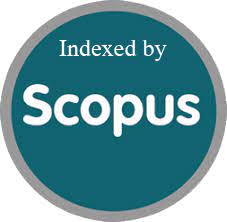Neonatal Duodenal Obstruction: A 15-Year Experience
DOI:
https://doi.org/10.52783/jns.v5.280Keywords:
Duodenal atresia, Annular pancreas, Duodenal obstruction, Malrotation, NeonateAbstract
Background: Congenital duodenal obstruction is one of the commonest causes of neonatal intestinal obstruction. We are presenting our 15-year experience by analyzing clinical spectrum and outcome in neonates with duodenal obstruction admitted at our center.
Material and Methods: The hospital records of all neonates admitted with duodenal obstruction from June 2000 to June 2015 were reviewed. The patient records were analyzed for antenatal diagnosis, age, sex, clinical presentation, diagnosis, associated anomalies, surgical procedures performed; postoperative morbidity and mortality. We excluded from our study malrotation of gut associated with congenital diaphragmatic hernia and abdominal wall defects.
Results: A total of 81 patients were admitted, out of which 56 were males and 25 were females. Polyhydramnios was detected in 24 (30%) pregnancies. Average birth weight was 2.1±1.0Kg and average gestational age was 38 (SD±1) weeks with 17 (21%) preterm neonates. Presenting features were vomiting in 81(100%) which was bilious in 81% and non bilious in 19%, epigastric fullness in 56 (69%) and dehydration in 18 (22%) and failure to thrive in 16 (19%). Most common cause of obstruction was duodenal atresia in 38 (46.9%), followed by malrotation of gut in 33 (40.7%), and annular pancreas in 4 cases. Depending upon site of location, infra-ampullary obstruction was the most common in 64 (79%), supra-ampullary in 9 (7.4%) and ampullary 8 neonates. Both duodenal atresia and malrotation of gut was present in 4 cases. X-ray abdomen was most commonly used investigation to confirm the diagnosis. All cases were managed surgically by open laparotomy. Eleven (13.5%) patients died due to sepsis and associated congenital anomalies.
Conclusion: Congenital duodenal obstruction most commonly presents in early neonatal period with features of upper GIT obstruction like vomiting and epigastrium fullness as in our series. Early antenatal diagnosis and surgical interventions hold the key in achieving good outcome. Associated congenital anomalies, prematurity, sepsis and delayed presentation are the main risk factors for post-operative mortality and morbidity.
Downloads
Metrics
Published
How to Cite
Issue
Section
License
Copyright (c) 2016 Journal of Neonatal Surgery

This work is licensed under a Creative Commons Attribution 4.0 International License.
You are free to:
- Share — copy and redistribute the material in any medium or format
- Adapt — remix, transform, and build upon the material for any purpose, even commercially.
Terms:
- Attribution — You must give appropriate credit, provide a link to the license, and indicate if changes were made. You may do so in any reasonable manner, but not in any way that suggests the licensor endorses you or your use.
- No additional restrictions — You may not apply legal terms or technological measures that legally restrict others from doing anything the license permits.










